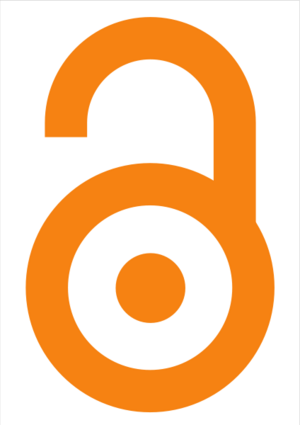Open Access
Appearance
| This page is part of the Teaching and Learning Resources Portal. |

"Open Access also offers opportunities for UBC to fulfill its mission of creating and preserving knowledge in a way that opens disciplinary boundaries and facilitates sharing knowledge more freely with the world." - -UBC Position Statement on Open Access.
What is It?
According to Peter Suber, open-access (OA) literature is digital, online, free of charge, and free of most copyright and licensing restrictions. What makes it possible is the internet and the consent of the author or copyright-holder.
There are two primary vehicles for delivering OA to research articles: OA journals and OA archives or repositories.
- OA archives or repositories do not perform peer review, but simply make their contents freely available to the world. They may contain unrefereed preprints, refereed postprints, or both. Archives may belong to institutions, such as universities and laboratories, or disciplines, such as physics and economics. Authors may archive their preprints without anyone else's permission, and a majority of journals already permit authors to archive their postprints. When archives comply with the metadata harvesting protocol of the Open Archives Initiative, then they are interoperable and users can find their contents without knowing which archives exist, where they are located, or what they contain. There is now open-source software for building and maintaining OAI-compliant archives and worldwide momentum for using it.
- OA journals perform peer review and then make the approved contents freely available to the world. Their expenses consist of peer review, manuscript preparation, and server space. OA journals pay their bills very much the way broadcast television and radio stations do: those with an interest in disseminating the content pay the production costs upfront so that access can be free of charge for everyone with the right equipment. Sometimes this means that journals have a subsidy from the hosting university or professional society. Sometimes it means that journals charge a processing fee on accepted articles, to be paid by the author or the author's sponsor (employer, funding agency). OA journals that charge processing fees usually waive them in cases of economic hardship. OA journals with institutional subsidies tend to charge no processing fees. OA journals can get by on lower subsidies or fees if they have income from other publications, advertising, priced add-ons, or auxiliary services. Some institutions and consortia arrange fee discounts. Some OA publishers waive the fee for all researchers affiliated with institutions that have purchased an annual membership. There's a lot of room for creativity in finding ways to pay the costs of a peer-reviewed OA journal, and we're far from having exhausted our cleverness and imagination.
Source: http://legacy.earlham.edu/~peters/fos/overview.htm
Learn More
- Open Access Peter Suber's 242 page book that provides comprehensive overview of open access. See also this site for updates and supplements.
- The Battle for Open by Martin Weller provides a great overview and critique of the current state of open scholarship. Particularly, Chapter 3 and Chapter 7 dig into open access and scholarship.
- Free Knowledge: Confronting the Commodification of Human Discovery is a collection of essays from the University of Regina Press that "looks at the question of knowledge: how it is generated and shared, and to what purpose. It also includes essays on how Westernized intellectual property rights impact traditional knowledge systems.
- Open Access in the Humanities - Another overview of Open Access publishing specific to the humanities.
- Open: The Philosophies and Practices that are Revolutionizing Education and the Sciences – A recently published book covering a breadth of topics and somewhat more focused on open education
- Open Access: Six Myths Put to Rest - Article by Peter Suber refuting some myths about open access.
Finding Open Access Journals and Books
- The Directory of Open Access Journals (DOAJ): a community-curated online directory that indexes and provides access to high quality, open access, peer-reviewed journals.
- The Directory of Open Access Books (DOAB)
- OpenDOAR The Directory of Open Access Repositories
- BC Open Textbooks
UBC Resources
- UBC Position Statement on Open Access
- UBC Scholarly Communications
- cIRcle: UBC's institutional repository
- Open UBC: Resources for faculty and students to learn about the why, what and how of open education practices and what they mean to teaching and learning at UBC]
- UBC Library Open Journal Hosting